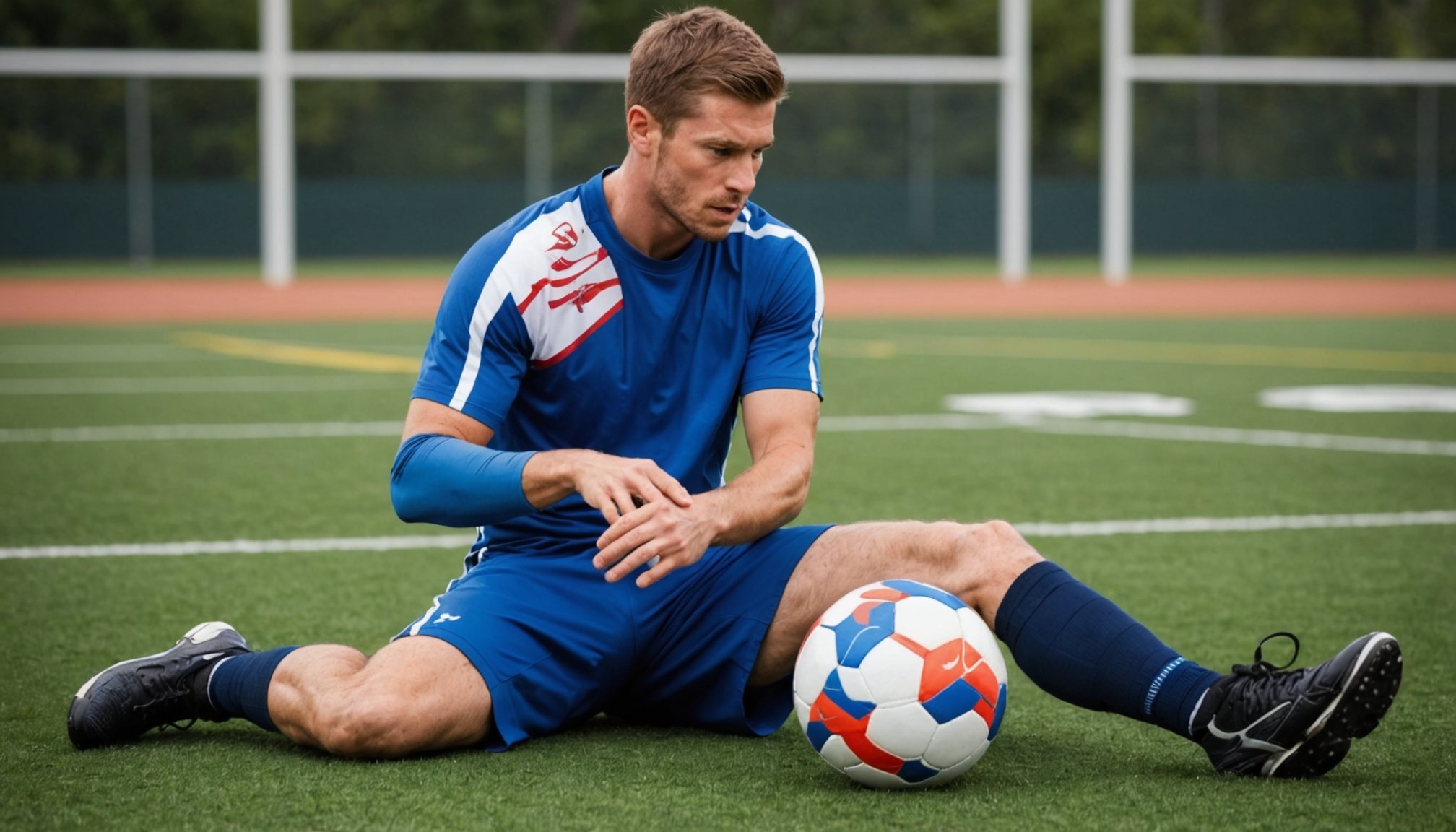Top Strategies for Effectively Preventing Sports Injuries: A Comprehensive Guide
Understanding the Risk of Sports Injuries
Participating in sports is an excellent way to stay fit, build teamwork skills, and enjoy physical activity, but it also comes with a significant risk of injuries. According to the National Safety Council, sports injuries lead to more than 260,000 emergency room visits in the U.S. each year.
Sports injuries can range from minor sprains and strains to more severe conditions like fractures, ligament damage, and concussions. These injuries not only cause immediate pain and discomfort but can also have long-term effects on an athlete’s health and performance.
In parallel : Enhancing Memory in Seniors: Effective Strategies for Better Retention
Pre-Season Preparation and Medical Screening
Before diving into the sports season, it is crucial to ensure that athletes are medically fit and prepared. Here are some key steps to take:
Pre-Season Physicals
A pre-season physical is essential to determine an athlete’s readiness to play. During this visit, a healthcare provider assesses the athlete’s overall health and fitness, reviews past injuries, and checks for heart abnormalities and other areas of concern.
Have you seen this : Recognizing Overtraining: Key Symptoms Athletes Must Know and Tips to Prevent It
Physical Therapy Screening
A physical therapy screening at the start of each season is a proactive tool for improving form, function, and athletic performance. Physical therapists identify areas of weakness and pre-existing issues to develop an individualized injury prevention plan. They look back at an athlete’s previous injuries to tailor a program that builds resilience in those areas.
Proper Training and Conditioning
Consistent and well-structured training is vital for preventing sports injuries. Here are some strategies to incorporate into your training regimen:
Year-Round Training
Year-round training helps athletes stay strong and fit, reducing the chance of burnout and overuse injuries. Incorporating other activities like running, swimming, and weight training alongside the primary sport can help maintain overall fitness without the monotony of playing the same sport all year round.
Warm-Up and Cool-Down Routines
Warming up and cooling down are critical components of any athletic routine. Dynamic stretches before practices and games prepare the body for high-intensity activity by increasing blood flow and flexibility. Post-activity static stretches improve circulation, flexibility, and range of motion, all of which help in injury prevention.
Strength Training
Strength training is a cornerstone of injury prevention. It helps strengthen specific muscle groups, improve joint stability, and enhance overall conditioning. Customized exercise programs focus on core strengthening, rehabilitation, and corrective exercises to enhance athletic performance and reduce the risk of injury.
Use of Proper Safety Equipment
Safety equipment is a non-negotiable aspect of preventing sports injuries, especially in high-contact sports like football.
Essential Safety Gear
For football players, essential safety gear includes:
- A properly fitted helmet to protect against concussions and other head injuries
- Athletic supporter and cups
- Hip pads
- Knee pads
- Mouthguards
- Properly-fitted cleats
- Shoulder pads
Injury Prevention Strategies
Here are some detailed strategies to prevent common sports injuries:
Preventing Overuse Injuries
Overuse injuries, such as tennis elbow, runner’s knee, and patellar tendinitis, occur from repetitive stress on joints or muscles. To prevent these, athletes should balance rest with targeted exercise programs. This includes strengthening exercises to reduce inflammation, strengthen muscles, and correct improper movement patterns that may contribute to the injury.
Hamstring Injury Prevention
Hamstring injuries are common in field-based sports. Strategies to prevent these include:
- Nordic Hamstring Exercises: These exercises can significantly improve muscle structure and reduce the risk of hamstring strains. Research has shown that consistent training over several weeks can lead to meaningful adaptations in the hamstrings.
- Monitoring High-Speed Running: Hamstring injuries are often linked to high-speed running, particularly during accelerations. Using technologies like OpenCap to capture motion data can help identify athletes at risk and provide insights into safer running techniques.
Common Sports Injuries and Their Prevention
Here are some common sports injuries and strategies to prevent them:
Knee Injuries
Knee injuries, such as ACL, MCL, and meniscus tears, are prevalent in sports involving quick changes in direction or heavy impact. Preventive measures include:
- Strengthening Exercises: Focusing on exercises that strengthen the muscles around the knee
- Proper Technique: Ensuring correct landing and movement techniques to reduce the risk of ligament damage
- Balance Training: Incorporating balance training to improve overall stability
Shoulder Injuries
Shoulder injuries, such as rotator cuff tears and shoulder dislocations, are common in overhead sports. Prevention strategies include:
- Strengthening Rotator Cuff Muscles: Exercises designed to strengthen the rotator cuff muscles
- Improving Joint Mobility: Regular exercises to improve joint mobility and restore function
The Role of Physical Therapy in Injury Prevention
Physical therapy is not just for injury recovery; it also plays a crucial role in preventing injuries.
Functional Movements and Balance Training
Physical therapists use functional movements and balance training to help reduce the risk of future injuries. They assess movement patterns and identify weaknesses or imbalances that could lead to injury. Correcting these patterns and implementing preventative exercises help athletes avoid injury.
Customized Exercise Programs
Customized exercise programs are at the heart of physical therapy for athletes. These programs focus on core strengthening, rehabilitation, and corrective exercises to enhance overall performance. They strengthen specific muscle groups, improve joint stability, and enhance conditioning, all of which are critical for preventing injuries.
Post-Injury Recovery and Prevention
Even after an injury, there are strategies to ensure a safe return to play and prevent future injuries.
Structured Rehabilitation Plan
A personalized rehabilitation plan is designed after diagnosing the injury. This plan includes exercises tailored to the injury, manual therapy techniques, and progress benchmarks to track improvement. Techniques such as manual therapy, therapeutic exercises, and neuromuscular training are personalized to each patient, ensuring a faster return to their sport.
Gentle Low-Impact Activities
During the recovery period, athletes can engage in gentle, low-impact activities like yoga, light jogging, and static stretching. These activities help maintain flexibility and range of motion without overworking tired muscles.
Practical Insights and Actionable Advice
Here are some practical tips and advice for athletes and coaches to prevent sports injuries:
Education and Awareness
Education is key in injury prevention. Athletes and coaches should be aware of the potential hazards in their sport and know how to avoid them. This includes understanding proper techniques, using correct equipment, and recognizing early signs of injury.
Environmental Safety
Ensuring a safe environment is crucial. This includes making the playing field safer by removing hazards, using proper lighting, and maintaining equipment.
Enforcement of Safety Standards
Enforcing safety standards is essential. This includes complying with safety regulations, such as wearing protective gear and following proper training protocols.
Preventing sports injuries is a multifaceted approach that involves pre-season preparation, proper training and conditioning, use of safety equipment, and the integration of physical therapy. By understanding the risks, implementing preventive strategies, and ensuring a safe return to play after an injury, athletes can significantly reduce the risk of injuries and maintain their health and performance over the long term.
As Scott Delp, the James H. Clark Professor in the School of Engineering at Stanford University, emphasized, “The vision is to screen athletes with advanced technologies and plot them on a standardized curve to see who’s at risk and who’s not. This could be a valuable tool across various sports where injuries are common”.
By adopting these strategies, athletes can enjoy their sports while minimizing the risk of injury, ensuring a healthier and more successful athletic career.
Detailed Bullet Point List: Preventive Measures for Common Sports Injuries
-
Knee Injuries
-
Strengthening exercises for the muscles around the knee
-
Proper landing and movement techniques
-
Balance training to improve overall stability
-
Use of knee pads and proper footwear
-
Shoulder Injuries
-
Strengthening rotator cuff muscles
-
Improving joint mobility
-
Regular exercises to restore function
-
Use of shoulder pads in contact sports
-
Hamstring Injuries
-
Nordic hamstring exercises
-
Monitoring exposure to high-speed running
-
Using technologies like OpenCap to capture motion data
-
Consistent long-term training to induce meaningful adaptations in the hamstrings
-
Overuse Injuries
-
Balancing rest with targeted exercise programs
-
Strengthening exercises to reduce inflammation
-
Correcting improper movement patterns
-
Gradually increasing training intensity and volume
Comprehensive Table: Comparison of Injury Prevention Strategies
| Injury Type | Prevention Strategies | Training Methods | Safety Equipment | Physical Therapy |
|---|---|---|---|---|
| Knee Injuries | Strengthening exercises, proper technique, balance training | Squats, lunges, leg press | Knee pads, proper footwear | Functional movements, balance training |
| Shoulder Injuries | Strengthening rotator cuff muscles, improving joint mobility | Shoulder rotations, push-ups | Shoulder pads | Exercises to strengthen rotator cuff muscles, joint mobility exercises |
| Hamstring Injuries | Nordic hamstring exercises, monitoring high-speed running | Sprinting drills, agility training | None specific | Functional movements, balance training |
| Overuse Injuries | Balancing rest with targeted exercise programs, correcting movement patterns | Gradual increase in training intensity and volume | Proper footwear, orthotics if necessary | Strengthening exercises, manual therapy techniques |
Quotes from Experts
-
“The truly unique part of this study was our ability to examine the microscopic adaptations of the muscle in response to Nordic hamstring exercises. No other studies have been able to explore this in humans,” – Scott Delp, James H. Clark Professor in the School of Engineering at Stanford University.
-
“Injury prevention is a major focus of sports physical therapy, with physical therapists using functional movements and balance training to help reduce the risk of future injuries,” – Physical Therapy & Sports Medicine: Injury Recovery Guide.
-
“Warming up and cooling down properly—doing light exercises such as stretching or light cardio exercises can prepare the body for high impact; thus reducing the risk of an injury,” – A Comprehensive Guide to Injury Prevention.











